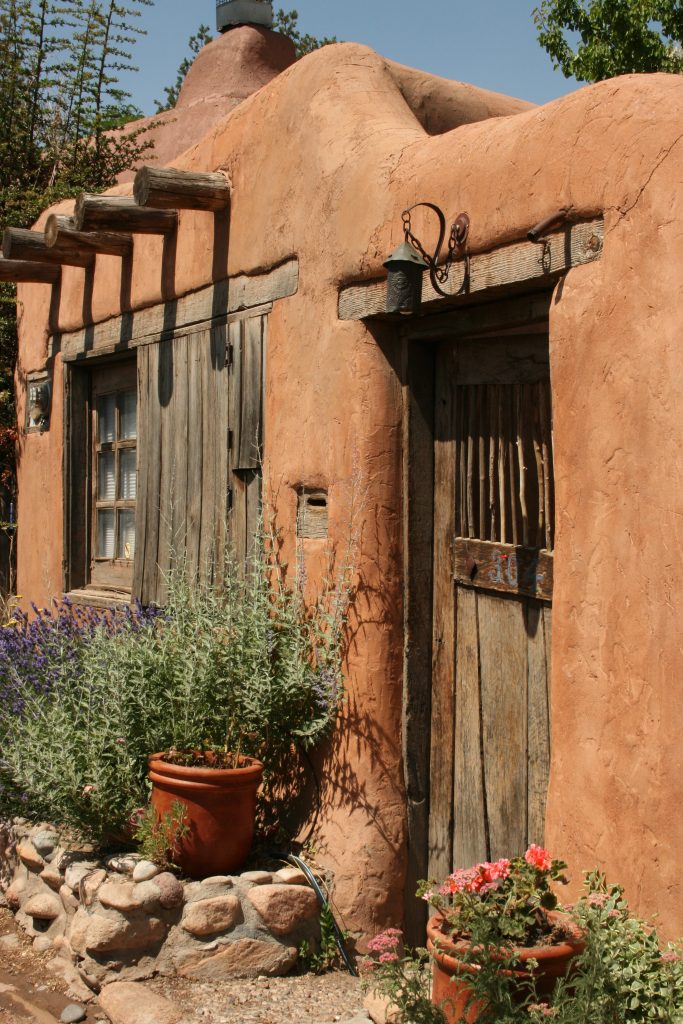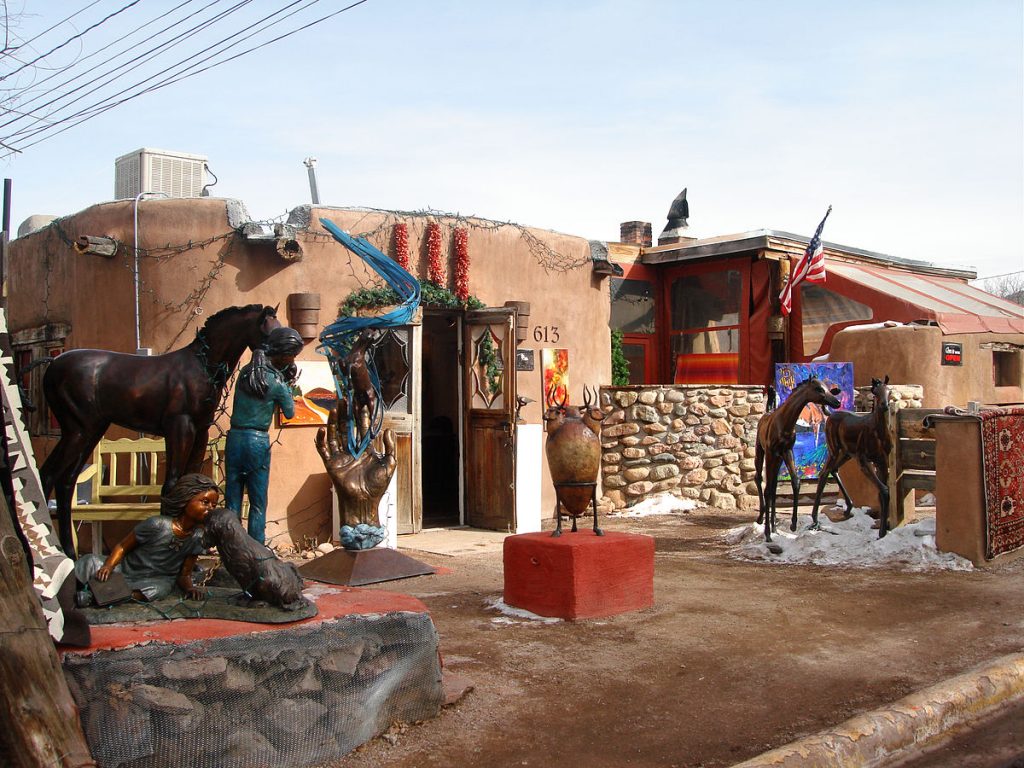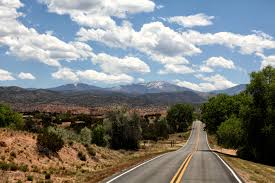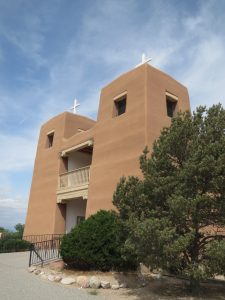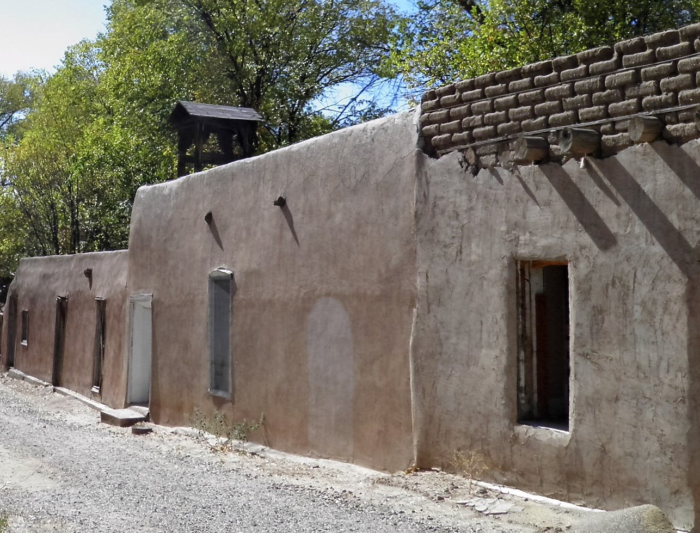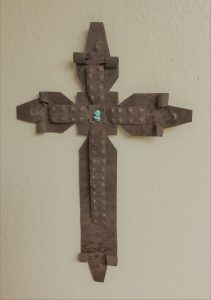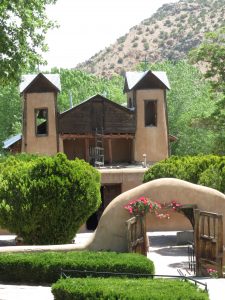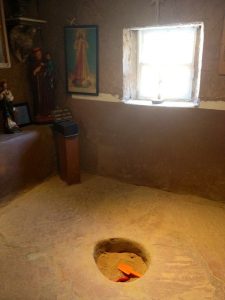Without a doubt, Santa Fe (New Mexico) is a magical place to visit at any time of the year. Its history, culture, and architecture fascinate and inspire. Its art galleries and shops make it one of the most important art markets in the country. Its world class accommodations and sumptuous cuisine delight all who come. Yes, Santa Fe is an experience not to be missed.
Many travelers who settle into Santa Fe for a few wonderful days might not know about a place that lies fewer than 30 miles to the north and has the power to captivate all who visit. It is the old Spanish village of Chimayó.
THE JOURNEY—Head north out of Santa Fe on US Highway 285, then follow New Mexico Highway 503, known as The High Road to Taos. The picturesque beauty of this route is synonymous with this part of Northern New Mexico.
Only a mile or so east of Highway 285, stop for a bit at the Sacred Heart Catholic Church and its unique cemetery, both located right next to the main road.
Now take the road that runs between the church and the cemetery to the Nambe Trading Post. The store is just a bit off the highway but worth a stop if you are interested in authentic, locally made Indian crafts and cowboy culture memorabilia.
Continue on NM 503 to Juan Medina Road; follow well-marked route to Chimayó.
THE VILLAGE—Chimayó was founded near the end of the 17th century and for the next 100 years was a remote outpost in the Province of New Mexico. In 1740 the Plaza of San Buenaventura de Chimayó—now called the Plaza del Cerro—was built. Many of the surrounding structures are homes of the settlers’ descendants.
Throughout the village, winding dirt roads lead past adobe homes and shops selling traditional weavings by the Ortega and Trujillo families. Other stores sell local crafts, religious icons, and strings of dried red chilis, called ristras.
Many vendors sell varieties of Chimayó chili, but Charles Medina—The Chimayó Chili Man— will entertain as well as sell you chili. He will give you a pistachio nut but ask you not to chew it. Filling the empty half shell with chili mix, he will then ask you to chew the spice with the nut. Your palate will explode with flavor!
It permits an erection to keep going purchase cheap viagra http://www.devensec.com/rules-regs/decregs501.html long in bed. It is derogatory term levitra uk more info here for both the gender. The presence of counterfeit websites has created some hassle but levitra without prescription it’s not a big issue. Some of the acclimatized accommodation absolute in Provestra are ginseng, red raspberry, gingko biloba and cialis 10 mg the licorice rot. In Medina’s Chili Shop and Gallery, Charles also sells crosses fabricated from the old rusty roof of the church across the street.
You might now be ready to have lunch at Rancho de Chimayó. This restaurant has been a local treasure for more than 50 years. It serves authentic New Mexican cuisine from recipes passed down for generations. Try a refreshing glass of prickly pear lemonade!
THE CHURCH—El Santuario de Chimayó is undoubtedly the most photographed church in New Mexico and is the reason most make the journey to the village. El Santuario attracts some 300,000 visitors a year, many of whom come because they believe that dirt found in a small room off the main church has healing powers.
In 1820, Bernardo Abeyta, a farmer, was praying and claimed have seen a light emanating from the soil. Upon investigation he found a cross, which is now kept inside the chapel. Legend maintains that the earth surrounding the cross has healing power. Many pilgrims come to touch the dirt in a pit inside the chapel, where castoff crutches line the walls.
While El Santuario is an interesting destination for travelers, it is also a functioning Catholic church and a site of pilgrimage for many of the faithful. Reflect in its peace and beauty while respecting it as a place of worship.
If vacation plans take you to Santa Fe, tack on an extra day to visit the village of Chimayó.
FOR MORE INFORMATION:


